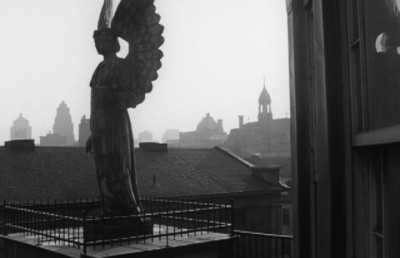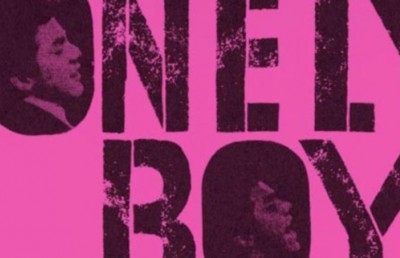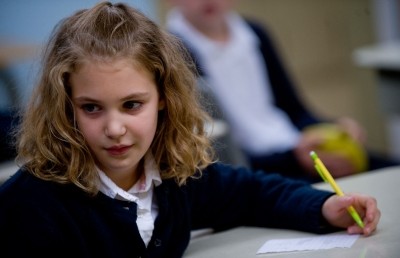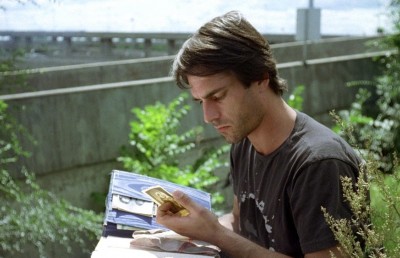Documentary, Postmodernism and La Mémoire des anges
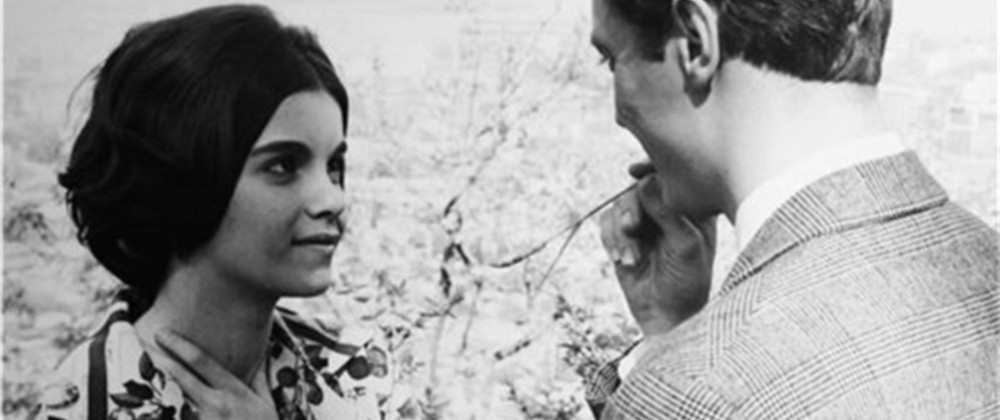
Luc Bourdon’s film La Mémoire des anges (2008) features several ideas and techniques associated with postmodernism. Bourdon constructs a portrait of Montreal by appropriating sequences and images from National Film Board (NFB) films produced between 1947 and 1967 and placing them in new contexts to create an impressionistic collage. Instead of a single point of view, multiple perspectives are presented that provide alternative versions of the city’s history. Finally, there is a strong critique of modernity and many of the changes that accompanied it in the 1960s. This use of appropriation and collage, the offering of multiple perspectives and its skeptical view of modernity distinguish it from most other city portrait films (or city symphony films) and mark it as a type of postmodern documentary.
A central strategy of postmodernism is the idea of appropriation. This involves taking existing work, either through quotation or reference or through reusing of the actual work, and creating something new by placing it in a different context through juxtaposing it against other work similarly removed from its original context. As Tony Barrett writes, “By appropriating or borrowing or plagiarizing or stealing, postmodernists remind us that the notion of originality is absent in most traditions of art.” [1] Jean-François Lyotard further argues that a characteristic of postmodernism is “a sort of bricolage – the high frequency of quotations of elements from previous styles or periods.” [2] These ideas find an echo in how Bourdon describes the genesis of the film, remembering wondering aloud “why it is we still shoot footage” when there is already so much footage that has already been shot [3] and then deciding his “goal was to make a new film . . . with parts of old films.” [4] The result is a film that consists entirely of images and sounds lifted from 120 NFB films, both documentaries and fiction films, and rather than a director, Bourdon describes himself as a “collage artist,” considering his film a “cinematic essay” instead of a documentary. [5]
Films that edit together archival, or “found,” footage from unrelated sources are not new. Relatively famous examples include Bruce Connor’s A Movie (1958), which used found footage and pre-recorded sounds to present a meditation on sex, war and the nature of the film medium, and Arthur Lipsett’s Very Nice, Very Nice (1961), a cultural critique featuring montages of still images and cut out animation occasionally animated by camera movement, brief archival footage and pieces of soundtracks taken from the discard piles of other NFB filmmakers. When asked about his relationship to these and similar films that followed them, Bourdon replied “working with collage is related to this tradition (experimental construction), but the final result is completely opposite.” [6] So while there is a kinship to Lipsett and Conner, he does not appropriate footage with the same intent. Experimental film often seeks to create a measure of discomfort in the audience, but Bourdon’s idea was “an open and simple film that offered a portrait of the city. A sort of family album.” (7) This explains why he states La Mémoire des anges “is a film in an experimental style, but it is not an experimental film.” [8]
One thing Bourdon does have in common with Lipsett and Conner is that the images and sounds he appropriates gain new meanings when removed from their original contexts and placed in collages to create new contexts. For example, though the film is a portrait of Montreal, not all the images were actually filmed in Montreal. A montage sequence of construction in Montreal includes shots from High Steel (1965, Don Owen), a documentary about Mohawks from Kahnewake who work building highrises in New York. Bourdon also uses a famous concert sequence from Lonely Boy (1962, Wolf Koenig and Roman Kroitor), where Paul Anka sings “Put Your Head On My Shoulder” at an open air concert in Long Island, New York. Here it is intercut with images of a young Geneviève Bujold and a man dancing from the fictional film La Fleur de l’âge, ou Les Adolescents (1964, Michel Brault), and the setting of Anka’s concert now seems to be a smoky nightclub. Bourdon argues “cinema is, among other things, an art of lies. The lies in my film, therefore, aren’t truths. Nothing is real except one simple thing: the desire to tell a story.” [9] It is not that they lose their original significance entirely, but as with Connor and Lipsett’s films, these collected images in their new contexts create a new meaning as well.
An example of an extended sequence where Bourdon creates a collage subverting the meaning of some of the original images begins with a St. Jean Baptiste Day parade (shot in vivid colour) marching past the then Archbishop of Montreal, Joseph Charbonneau, on a review stand. This is followed by black and white images of a Roman Catholic school, including a priest unlocking a padlocked door and revealing an enormous dormitory with what seems to be at least 100 beds. We then return to the parade, in which Lionel Groulx is guest of honour, and the young boy who is the focus of the parade, seemingly nude under a fleece and red cape, blowing kisses to the crowd and being carried off by a man. This parade footage, originally intended as a positive representation identified with a Roman Catholic and nationalist celebration, becomes disturbingly sexualized when placed next to the school images in the light of what we now know about the horrors which occurred (and it becomes even more provocative by linking these associations to iconic Church figures). As Bourdon says, “The sequence with the young St Jean Baptiste . . . can’t help echoing all the pedophile cases we’re aware of today.” [10] The sequence then continues with an oddly beautiful shot of a group of nuns walking together, faces hidden by cowls and resembling a strange flock of birds. This is followed by images of convent life and a shot of nuns attending mass viewed through a padlocked grille which makes them look like prisoners. Some of these images were likely intended to be critical, but not all. The shot through the grille, for example, is from Les Petites Soeurs (1959, Pierre Patry), which offers an exceptionally positive and sympathetic portrait of convent life. Edited together with the other images, it is transformed and becomes one of a compendium of images of subjugated women. As Bourdon asks, “Aren’t the cloistered women with their hidden faces reminiscent of the burqa we condemn today? . . . What we consider inhuman and intolerable was commonplace in our city.” [11] This entire sequence, which Bourdon states, “was essential in order to express the fanaticism of the whole Catholic establishment of that era,” [12] reflects the classic documentary insight that images can have a neutral quality, and through collage are capable of being invested with new meanings that comment on their original contexts.
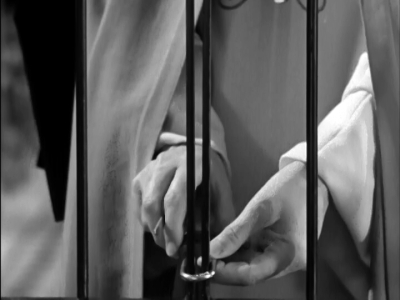
Bourdon also creates collages using images that recur in different films. Instead of juxtaposing contrasting images, in what is probably the most noted sequence he playfully uses similar scenes of pedestrians crossing streets in winter to create a memorably seamless evocation of Montreal’s longest season. This seemingly simple sequence also highlights the complexity of Bourdon and his editor Michel Giroux’s collage technique. In a stretch of film that lasts barely 90 seconds, he jumps back and forth several times between footage from at least four different sources. But it was definitely worth it, for, as Bourdon notes, “how do you make a film about Montreal without dealing with winter?” [13]
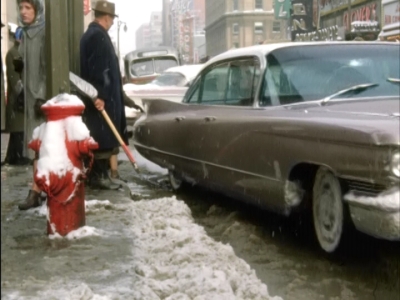
These are not a seemingly random series of collages in the manner of Conner or Lipsett (not that their sequencing was genuinely random, it is just that they seem to have been intended to appear random). Bourdon presents a series of motifs on, as examples, the Catholic Church, winter or Montreal nightlife. But while they may jump back and forth through a 20-year time span, there is a narrative thrust to the film. It is partly chronological, as scenes mostly from the 1940s and 50s give way to images mostly from the 1960s, but there are often collages of morning images followed by afternoon and then evening images, with the cycle (perhaps) again repeating itself. There is also another example of appropriation when the film at times seems to borrow from classic Hollywood movies. Near the beginning is a series of shots of boats docking at the port (including a memorable shot from the port of the Basilica and the Mountain beyond it), followed by dazzling colour views of the city during the early morning. This is followed by black and white shots of sailors hitting the city and setting up dates for the evening. We then return to colour for a bright street scene and the music swells up and the song “Au Parc Lafontaine” begins. Although Bourdon asserts he did not have any specific Hollywood film in mind when constructing this sequence [14], it is irresistibly reminiscent of the beginning of the classic Hollywood musical On the Town (1949, Stanley Donen and Gene Kelly). And while he may not have been referencing that particular film, Bourdon does say the “idea of the film” was to make “a musical about Montreal.” [15]
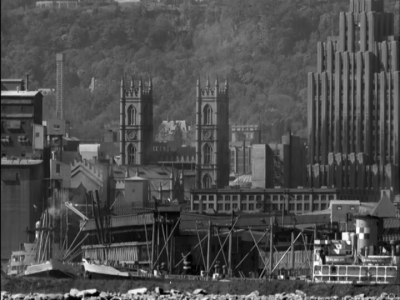
Another key concept identified with postmodernism is aperspectivity, which is the presentation of multiple perspectives without privileging one above the others. As Richard Tanas argues, postmodernism implies that “reality is in some sense constructed by the mind, not simply perceived by it, and many such constructions are possible, none necessarily sovereign.” [16] This suggests, as Randolph Jordan writes, that “truth” can no longer be seen as a “function of . . . the photograph’s indexical relationship with reality” and a characteristic of postmodern documentary is therefore “a growing acceptance of truth as being the subjective construction of our impressions.” [17] Or, as Bourdon says, “Truth doesn’t exist. Points of view exist.” [18]
Bourdon’s film reflects this aperspectivity in several ways. The first, and most striking, is the absence of narration. In another recent “city portrait” film, Of Time and the City (2008), Terence Davies uses archival footage and a deeply personal, autobiographical narration to present a portrait of Liverpool. The result has been described by Martin Pedler as “angry poetry,” where Davies expresses his fury “at how bad things once were (and perversely) . . . that these things have changed.” [19] So while there are many similar images and there are certainly times (such as the Catholic clergy sequence) where Bourdon expresses his anger, just as there are moments of humour in Davies’ film, there is a marked difference in tone between the two. Davies uses images of Liverpool to tell his own story as well as the city’s. Similarly, Guy Maddin’s My Winnipeg (2007) mixes found footage with new material shot to resemble found footage to create a documentary-fantasy hybrid narrated by himself about both Winnipeg and his family’s history. By contrast, there are no details of Bourdon’s life to be found in La Mémoire des anges. Instead of a single authorial voice, the narrative is carried by the people whose faces are inscribed in the films he used. Bourdon, who was not even born during much of the period covered, selected the 1950s and 60s because he considered it to be an era that was “well filmed.” As he says, “I’m not nostalgic. I just like cinema. I just like good images and good sounds.” [20] Providing another reason, he adds “I don’t suffer from the auteur . . . It was out of the question to talk about myself, because it was much more interesting to make a collage, a film which touches each and every one of us.” [21]
Another aspect of Bourdon’s representation of multiple perspectives is that he doesn’t recount the city’s history through the lens of a single class or ethnic group. Besides French and English, the film presents Irish, Italians, Jews, African Americans and other ethnic groups. On this point, Bourdon agrees this was deliberate. “How could I not look for images of the city’s Chinese (impossible to find), Jews, Italians, Greeks? They all took part in the life of the city. They were part of it and the film we put together tried to take that into account.” [22] There are also old and young, working class Francophones in their homes and a middle class Jewish family at Passover. There are many shots of people working, but also shopping, going out at night, taking part in political demonstrations, and so on.
A possible result of this is that the multiplicity of perspectives introduces alternative historical narratives into the film. For example, going against the mainstream history of the “two solitudes” and of there being little contact in this era between French and English, there is footage of Anglos speaking English to Francophones who speak back to them in French, and both understanding each other, which contradicts the generally held (and certainly often true) idea that in this era Francophones were habitually forced to speak English at work. There are also stockbrokers speaking English-accented French to clients (as well as Francophone stockbrokers, contradicting other popular perceptions of the period). On the other hand, there is also the song sequence of Raymond Lévesque’s famous nationalist anthem “Bozo-les-Culottes” with the lines “Que les Anglais avaient tous les bonnes places/ Et qu’ils lui riaient en pleine face (The English have all the best jobs/ And they laugh in your face).” [23] While the film does cover a time when it is undeniable that, as Bourdon says, “the city was dominated by an Anglo-Saxon elite,” [24] he offers a more complex look at the events of those years. Another example of this is his treatment of the rise of nationalism in Quebec, a subject he insisted on dealing with over the objections of his producer. [25] Instead of using relatively benign images to represent the nationalist political firmament (for example, Gilles Vigneault singing “Mon pays” or something along those lines that must have been readily available), he instead has a clip of Tex Lecor singing “Le Patriote (Aux armes Québecois),” which Bourdon describes as “a song that is patriotic, racist and representative of the violent era of FLQ bombs and the frustration of a section of the population who were fed up with being treated as second class citizens.” [26] He then parallels it with an alternate narrative of 60s radicalism, where Anglos are protesting the Vietnam War. The point, as Bourdon sees it, is that “Montreal is a cosmopolitan city – and has been for a long time – and most world disputes are still expressed today.” [27] This multiplicity of perspectives is therefore necessary to capture the “real” Montreal, both then and now. Similarly, while there are many shots that highlight how beautiful Montreal was, these are balanced by images of tenements, and the glamorous nightlife featuring Oscar Peterson or Dominique Michel is undercut by images from a sleazy strip club. By providing these contrasts, Bourdon reaches for a broad spectrum of perspectives to project his idea of the city.
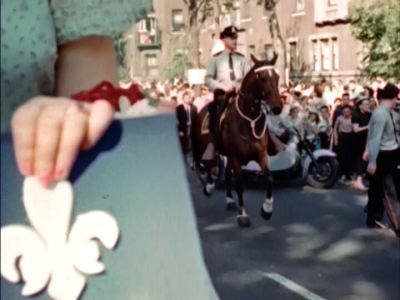
Another aspect of the film that illustrates its affinity with postmodernism is a skeptical view of modernity. Tony Barrett argues that a defining characteristic of postmodernism is its “claim that modernity leads to social practices and institutions that legitimize domination and control by a powerful few over the many.” [28] This sentiment finds an echo in Bourdon’s comment about the consequences of Montreal’s modernization, “We must not forget we destroyed neighbourhoods, houses, lives . . . to make autoroutes cutting across downtown.” [29] From the start of the film, where a quartet sing the spiritual “Joshua Fought the Battle of Jericho,” with its refrain “the walls came tumbling down,” followed by a tracking shot of a tram dissolving into (possibly) the same tramline now covered in grass, the theme is established of a city’s golden age and its decline from it. Later, a Raymond Lévesque song that includes a line about the “victims of modernity” plays over images of poverty from Hubert Aquin’s À Saint-Henri le cinq septembre (1962). Above all, Bourdon follows about an hour of mostly beautiful images (even, it must be said, the shots of poverty look beautiful when photographed in crisp black and white) with 15-20 minutes of images of discord, dysfunction, congested traffic and ugly buildings. While the skyscrapers have a certain sleek beauty, they are somehow impersonal and characterless compared to the baroque and art deco styles of some of the earlier buildings on show. As Bourdon says, “Montreal was a demolition yard from the beginning of the 60s (like many other North American cities) in order to make way for modernism, a new world, a new generation, a new wind sweeping America.” [30] So earlier shots that highlighted Montreal’s beautiful landscape and buildings are echoed in similar shots which now present impersonal highrises and anonymous public housing.
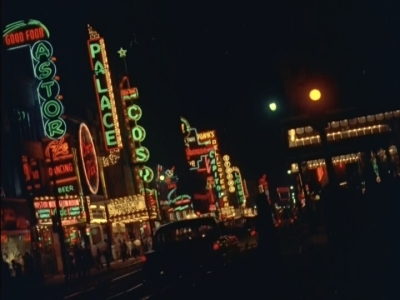
This view of the 1950s and 1960s is highly revisionist. Quebec history as it is taught in the schools (certainly as I was taught it) portrays the period before 1960 as “la grande noirceur” (“great darkness”), a time of political and social oppression, while the 60s was the time of the Quiet Revolution, a period of progress and hope. Bourdon remarks that “We always talk about those years as darker . . . [but] people lived during the period, had fun. They did not just go to the church, you know.” [31] This subversion of the accepted history of the city is arguably the most interesting and unexpected aspect of the film. Watching La Mémoire des anges, it is immediately obvious that it was made by a director who is in love with the 1950s: the classic lines in architecture and clothing, the glamorous nightlife, just the way people looked and acted and dressed. The 1960s, on the other hand, are represented by images of smog, ugly buildings and congested traffic. This comes to a sort of climax in a sequence where the face of Montreal’s modernization, long time Mayor (1954-1957, 1960-1986) Jean Drapeau, gives a speech about the need to anticipate problems decades in advance, his words being heard while we see images of the overpasses built during his tenure that are now crumbling around us. This revisionism is deliberate. Bourdon says that he is “exhausted by always seeing the same images describe my community and, most of the time, only starting with the 1960s . . . In doing this work, I discovered images of a period that was unknown to me.” [32]
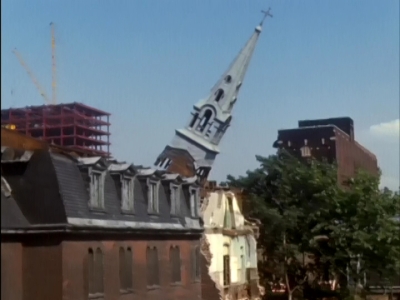
When asked about his relationship with postmodernism, Bourdon replied: “I don’t really know what postmodernism means” and points out that examining past mistakes does not necessarily mean indulging in “postmodernist sarcasm.” [33] This is a legitimate point that distinguishes his film from many films that are considered postmodernist. However, when he decided to make a “city portrait” documentary by “making sampling with films” [34] instead of shooting new material, as traditional city documentaries from Berlin: Symphony of a Great City (1927, Walter Ruttman) to the previously mentioned À Saint-Henri le cinq septembre (which he quotes from repeatedly) and on to many others have done, he marked himself as a postmodernist by instinct, if not by conscious decision. Taken in conjunction with his collage technique, his presentation of multiple perspectives whose distillation offers a shifting, transitory idea of reality and his sharp critique of modernity, the results of his bricolage might suggest that he is in fact a master of postmodernist documentary, whether he knows it or not.
Endnotes
1 Terry Barrett, “Modernism and Postmodernism: An Overview with Art Examples.” Art Education: Content and Practice in a Postmodern Era. Ed. J. Hutchens and M. Suggs. Reston, VA: National Art Education Association, 1997, 25-26.
2 Jean-François Lyotard, “Defining the Postmodern.” The Norton Anthology of Theory and Criticism. Ed. Vincent Leitch. New York, NY: Norton, 2001, 1613.
3 Matthew Hays, “Montreal, Open City.” Montreal Mirror October 9, 2008.
4 Luc Bourdon, “Interview: A Cinematic Essay in the Age of Sampling.” La Mémoire des anges. Métropole, 2009.
5 Luc Bourdon, E-mail interview, July 20, 2009
6 ibid
7 ibid
8 Normand Provencher, “La Mémoire des anges: Le casse-tête De Luc Bourdon.” Le Soleil October 31, 2008, sec. Arts et spectacles.
9 Bourdon, E-mail interview, op cit
10 ibid
11 ibid
12 ibid
13 ibid
14 ibid
15 Luc Bourdon, “Interview: The Golden Age.” La Mémoire des anges. Métropole, 2009.
16 Richard Tanas, The Passion of the Western Mind. New York, NY: Ballantine Books, 1991, 396.
17 Randolph Jordan, “The Gap: Documentary Truth Between Reality and Perception.” Offscreen 7.1 (January 2003).
18 Bourdon, E-mail interview, op cit
19 Martin Pedler, “Midnight at MIFF? The 57th Melbourne International Film Festival.” Senses of Cinema 49 (2008).
20 Bourdon, “Golden,” op cit
21 Bourdon, E-mail interview, op cit
22 ibid
23 Raymond Lévesque, “Bozo-les-culottes.” 1967
24 Bourdon, E-mail interview, op cit
25 ibid
26 ibid
27 ibid
28 Barrett, op cit, 18
29 Bourdon, E-mail interview, op cit
30 ibid
31 Luc Bourdon, “Interview: Revisiting the Past.” La Mémoire des anges. Métropole, 2009.
32 Bourdon, E-mail interview, op cit
33 ibid
34 Bourdon, “Cinematic,” op cit
Works CitedBarrett, Terry. “Modernism and Postmodernism: An Overview with Art Examples.” Art Education: Content and Practice in a Postmodern Era. Ed. J. Hutchens and M. Suggs. Reston, VA: National Art Education Association, 1997. 17-30.
Lyotard, Jean-Francois. “Defining the Postmodern.” The Norton Anthology of Theory and Criticism. Ed. Vincent Leitch. New York, NY: Norton, 2001. 1612-1615.
Tanas, Richard. The Passion of the Western Mind. New York, NY: Ballantine Books, 1991.
Hays, Matthew. “Montreal, Open City.” Montreal Mirror October 9, 2008.
Jordan, Randolph. “The Gap: Documentary Truth Between Reality and Perception.” Offscreen 7.1 (January 2003).
Pedler, Martin. “Midnight at MIFF? The 57th Melbourne International Film Festival.” Senses of Cinema 49 (2008).
Provencher, Normand. “La Mémoire des anges: Le casse-tête De Luc Bourdon.” Le Soleil October 31, 2008, sec. Arts et spectacles. My translation.
Interviews citedBourdon, Luc, E-mail interview, July 20, 2009. My translation.
Songs CitedLévesque, Raymond. “Bozo-les-culottes.” 1967
DVD Sources CitedBourdon, Luc. “Interview: A Cinematic Essay in the Age of Sampling.” La Mémoire des anges. Métropole, 2009.
Bourdon, Luc. “Interview: Revisiting the Past.” La Mémoire des anges. Métropole, 2009.
Bourdon, Luc. “Interview: The Golden Age.” La Mémoire des anges. Métropole, 2009.
Films CitedA Movie (1958, Bruce Conner)
À Saint-Henri le cinq septembre (1962, Hubert Aquin)
Berlin: Symphony of a Great City (1927, Walter Ruttman)
High Steel (1965, Don Owen)
La Fleur de l’âge, ou Les Adolescents (1964, Michel Brault)
La Mémoire des anges (2008, Luc Bourdon)
Lonely Boy (1962, Wolf Koenig and Roman Kroitor)
My Winnipeg (2007, Guy Maddin)
Of Time and the City (2008, Terence Davies)
On the Town (1949, Stanley Donen and Gene Kelly)
Les Petites Soeurs (1959, Pierre Patry)
Very Nice, Very Nice (1961, Arthur Lipsett)



